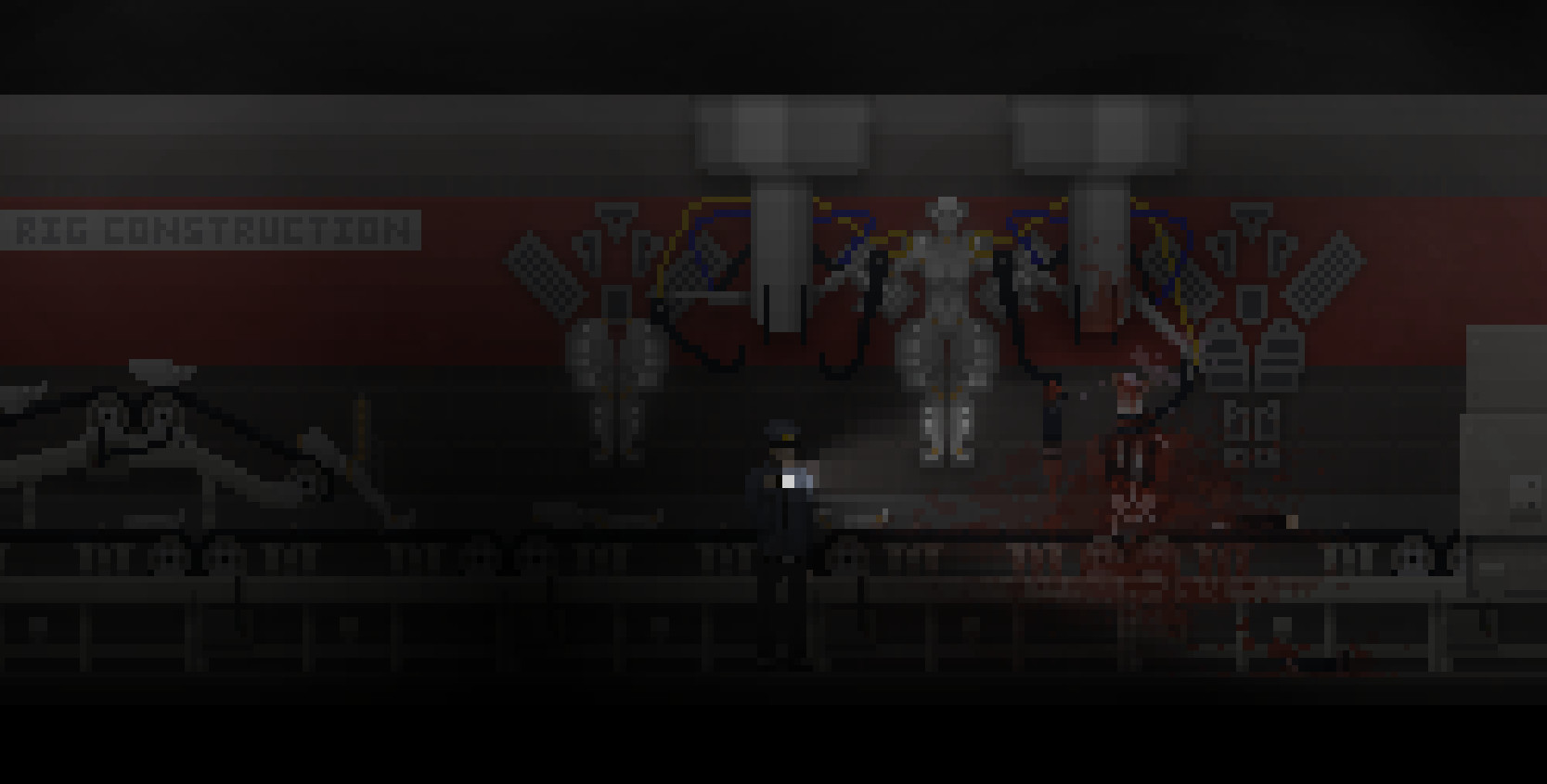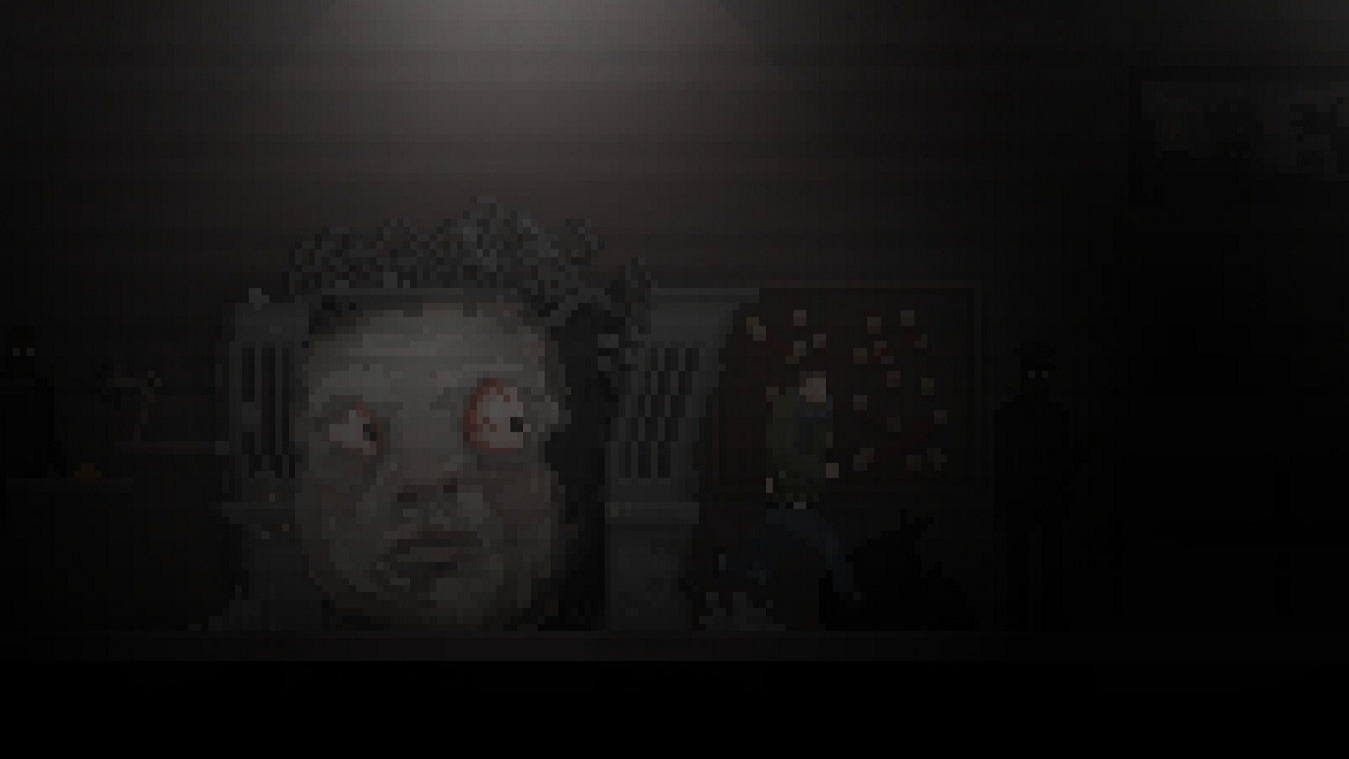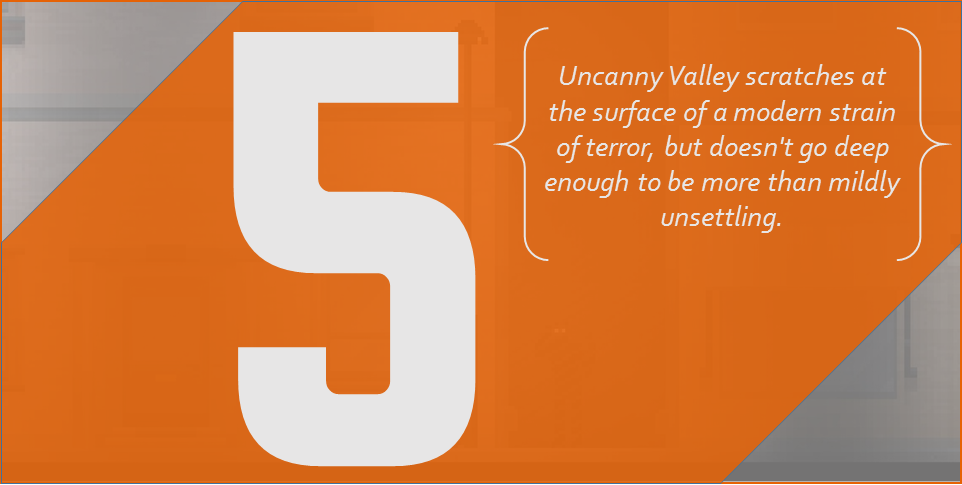Uncanny Valley and Blue-Collar Terror
The uncanny valley is an uncomfortable place to inhabit. First hypothesized in 1970 by roboticist, Masahiro Mori, and then later coined by author Jasia Reichardt, the uncanny valley refers to the unsettling feeling of viewing and interacting with something that looks and behaves in a way close, but not entirely, like that of a human. Generally, this is used in reference to the way technology is quickly reaching a point where it is becoming harder and harder to distinguish between the natural and the digital, with the likes of humanoid robots and photorealistic animation creating an uneasy dissonance between what appears real and what we know to be artificial.
Approaching Uncanny Valley the game, the term would at first glance seem curiously bestowed. The aesthetic hardly begins to grasp at the lifelike, blocky characters and simple textures in no way attempting to disguise their digital existence. Similarly, Uncanny Valley is blunt and transparent in its mechanical introduction, producing to the player all manner of tutorial slides before the game has so much as begun, outlining how very game-y a game this is. But this disparity isn’t the result of a clumsy and inexplicable application of a term, but rather the basis of an internal dichotomy from which Uncanny Valley begins to execute an unnervingly grounded horror story.
On its surface Uncanny Valley is little more than disturbing anomalies and robotic sociopathy, but fueling these gross but not entirely terrifying encounters are more ordinary and distressing fears. The impenetrable anonymity of corporate hierarchies; humanity’s simultaneous fascination and terror at technological revolution and the possibility of artificial life; the daily mundanity and perceived insignificance of the working class, upon which all manner of inhumane practices are allowed to continue unchecked because the lowest rung on the ladder is the most readily replaced.

Uncanny Valley is terrifying because it takes America’s most entrenched capitalistic fears and proves them real. Yes, corporations really are as insidious and profit driven as they appear and we can do nothing to stop them. Robots will eventually destroy us and yet we continue to construct our own extinction. And through this all, blue-collar workers will continue to have no power, but rather be beaten down and eliminated at the mere hint of incompliance. It takes a conspiracy theorist’s mindset perhaps to buy into any of these lines of thought ordinarily, but within Uncanny Valley’s haunting soundscape and grotesque visuals, these ideas seem to hang over you suspended only by your own disbelief which becomes harder to hold to and gauge as the lines between dreams, reality, and what is actually going on begin to blur.
But I need to stop myself, because while it is easy to take the themes Uncanny Valley plays with and run with them, a distinction needs to be made between the horror Uncanny Valley alludes to and the horror it actually succeeds at conveying. And to that effect Uncanny Valley fails rather dismally. It may have a brilliant foundation for which to craft a socio-economic, technologically tinged horror experience, but it leaves it all on the table, opting for shock value over a lasting, pervasive terror. There is a lot that could be construed as frightening here, but little that stays with you once the immediate disturbance wears off, often before a scene has even come to its conclusion.
Uncanny Valley struggles in pacing itself in any way conducive to the sort of horror it employs. The plodding tedium of your character’s nightly shifts could have been used to build tension and explore the ways in which the game seems to position the working class as the default victim of every crime, but there is so little holding these segments together that often I found myself wandering a deserted building entirely bored rather than distressed, until an obligatory jump scare brought me back to attention. This hands-off approach is understandable within the context of Uncanny Valley’s branching design, with the decisions you make quietly shaping how the narrative eventually unfolds, but the variables at play are so opaque that there is no way of actually knowing what actions effect what outcome until it has already happened.

Part of me loves that uncertainty and unpredictability, because it fits so nicely within Uncanny Valley’s theme of insecurity and helplessness in the face of industry and technological innovation, but Uncanny Valley never finds a way to balance its mechanical desires with those of its narrative. Either the story plays out linearly (or with enough present information for you to knowingly guide it) and loses the element of unpredictability needed to really sell the plot, or it keeps narrative forks hidden to the player and in turn causes the plot to feel uneven and shallow by keeping so much of the story locked away on paths the player may or may not ever see.
Which is a problem inherent to any game which requires multiple replays to see fully, but it is especially bad here because the unpleasant and inscrutable nature of the game left me with little enthusiasm to venture through it again. Uncanny Valley is upfront in telling you it needs to be replayed multiple times, but it never gives a reason to want to. So much of the game consists of tiresomely meandering through empty rooms, uselessly attempting to interact with objects which may or may not change how the narrative actually unfolds. I felt as lost during my first playthrough as I did having beaten the game, as incapable of understanding the underlying forces at work within Uncanny Valley’s plot as when I was first introduced to them, and the idea of spending another few hours trying to break out of that mold is actively off-putting rather than compelling.
Final Word
Uncanny Valley wants to be a game you discover slowly, that eats away at you a little more with each new piece of information discovered until the whole thing is finally laid bare in grotesque completeness. But for as much as it might pester me to see it through again the mystery hidden under its tortuous mechanics never became intriguing enough to force me to make sense of how to find it. Uncanny Valley scratches at the surface of some of the most internalized and adaptable fears of modern society, but doesn't go deep enough to leave me more than mildly perturbed by its gloomy theatrics.


